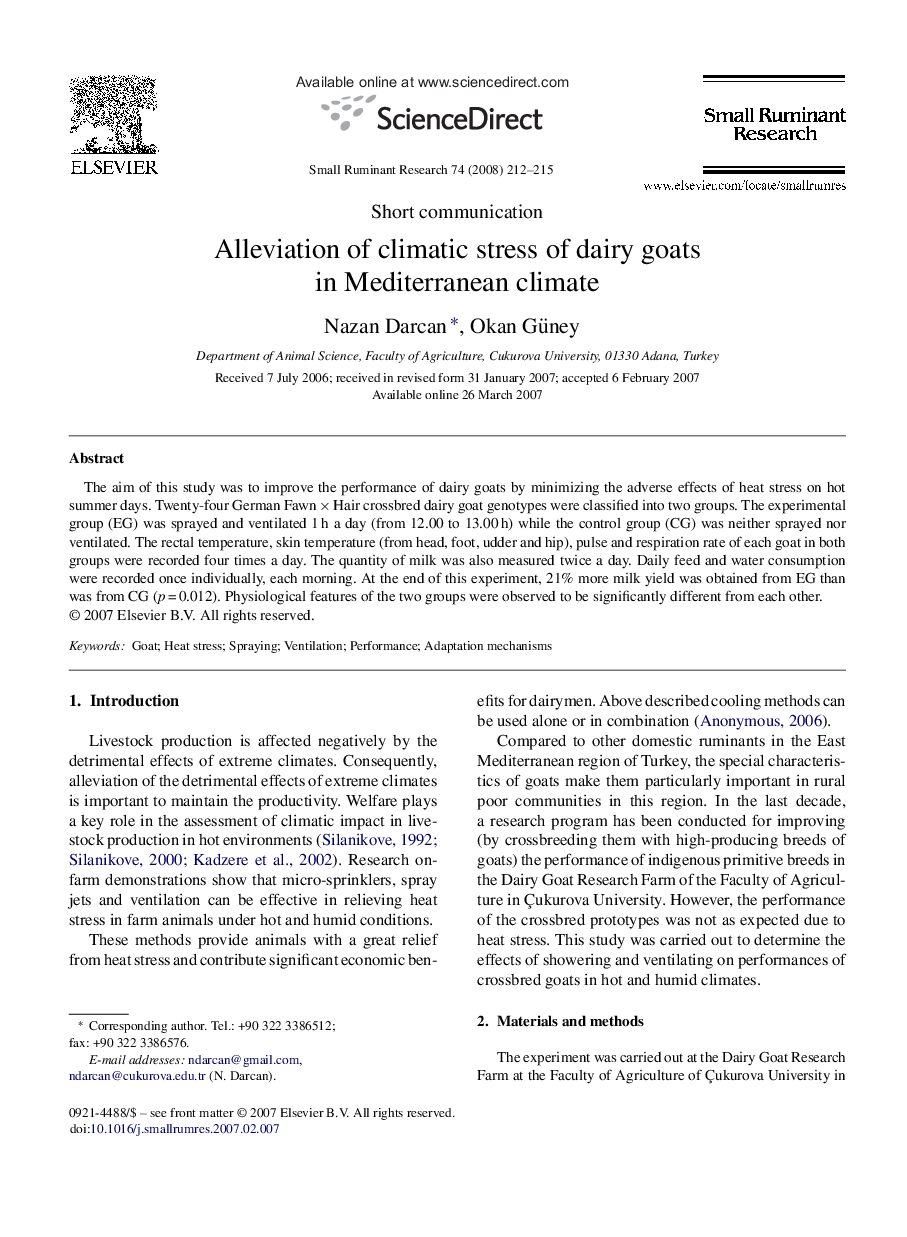| Article ID | Journal | Published Year | Pages | File Type |
|---|---|---|---|---|
| 2457968 | Small Ruminant Research | 2008 | 4 Pages |
The aim of this study was to improve the performance of dairy goats by minimizing the adverse effects of heat stress on hot summer days. Twenty-four German Fawn × Hair crossbred dairy goat genotypes were classified into two groups. The experimental group (EG) was sprayed and ventilated 1 h a day (from 12.00 to 13.00 h) while the control group (CG) was neither sprayed nor ventilated. The rectal temperature, skin temperature (from head, foot, udder and hip), pulse and respiration rate of each goat in both groups were recorded four times a day. The quantity of milk was also measured twice a day. Daily feed and water consumption were recorded once individually, each morning. At the end of this experiment, 21% more milk yield was obtained from EG than was from CG (p = 0.012). Physiological features of the two groups were observed to be significantly different from each other.
